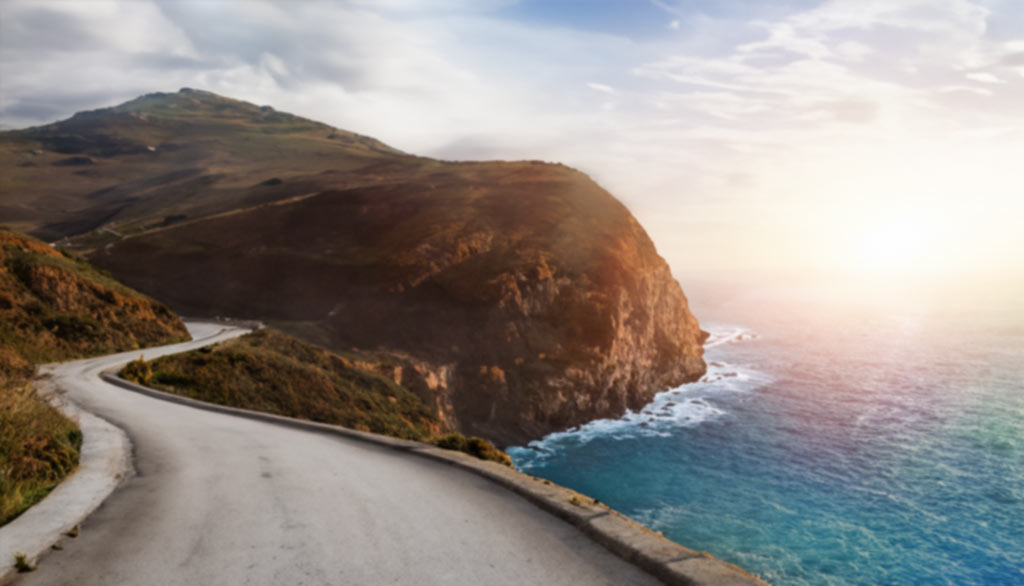Sfakia, also known as Chora Sfakion or Hora Sfakion, is a small town and region in southwestern Crete, Greece. It is the capital of the mountainous and rugged area of Sfakia, which spans from the southern part of the White Mountains (Lefka Ori) to the Libyan Sea. The town has a population of around 265 people, while the entire municipality is home to about 2,000 residents. Sfakia has been known for its fierce resistance against foreign invaders, including the Venetians and the Ottomans. The Sfakians played significant roles in Cretan uprisings and helped Allied forces evacuate the island during World War II. The region’s rugged terrain and independent spirit have shaped its unique culture and traditions.
Car rental costs in Sfakia vary depending on the season and type of vehicle. Visitors can expect to pay €40 ($43.6, £34.8) to €60 ($65.4, £52.2) per day for a compact car, while larger vehicles or SUVs may cost €60 ($65.4, £52.2) to €100 ($109, £87) per day. It is advisable to book in advance, especially during peak tourist seasons. Given Sfakia’s mountainous terrain and winding roads, renting a vehicle with good handling and safety features is recommended. A medium-sized car is ideal for navigating narrow and steep roads. Automatic transmission vehicles are available but may be more expensive. Make sure to choose a car with air conditioning, as temperatures in Crete can reach 35°C (95°F) during summer.
What are the top attractions to visit near Sfakia?
The top attractions to visit near Sfakia are listed below.
- Agios Pavlos Church. Agios Pavlos Church is a notable landmark known for its historical and religious significance. It is a popular destination for its cultural value and architectural beauty. The church is in Agios Pavlos village, 20.3 kilometers (12.62 miles) from Sfakia.
- Glyka Nera Beach. Glyka Nera Beach is a coastal spot that attracts many tourists. It is known for its crystal-clear waters and natural beauty. Visitors can enjoy swimming, sunbathing and snorkeling in this ideal setting. Glyka Nera Beach is 8.5 kilometers (5.28 miles) from Sfakia.
- The Twelve Apostles Church. The Twelve Apostles Church is another intriguing attraction in Sfakia. This church holds historical significance and is named after the twelve apostles of Christianity. It is a place of worship and pilgrimage, offering visitors a look into the region’s religious heritage. The Twelve Apostles Church is located in the village of Agia Roumeli, 1.3 kilometers (0.81 miles) away from Sfakia.
What are the best places to eat and drink in Sfakia?
The best places to eat and drink in Sfakia are Mesohori Taverna, Taverna Vatalos and Delfini Tavern.
- Mesohori Taverna. Mesohori Taverna is a cozy eatery known for its traditional Greek cuisine. It offers dishes like moussaka, grilled lamb chops and fresh seafood. Mesohori Taverna is located within Sfakia, 550 meters (0.34 miles) from the center, making it easily accessible to visitors. Meals typically cost €15 ($16.35, £13.05) to €20 ($21.8, £17.4) per person.
- Taverna Vatalos. Taverna Vatalos is a family-run restaurant specializing in Cretan delicacies. Guests can enjoy local favorites such as stuffed vine leaves, fried cheese and lamb kleftiko. It is 13.1 kilometers (8.14 miles) from Sfakia. A meal at Taverna Vatalos usually ranges from €10 ($10.9, £8.7) to €15 ($16.35, £13.05) per person.
- Delfini Tavern. Delfini Tavern is a seaside restaurant offering views of the Mediterranean. Their menu features grilled octopus, Greek salads and homemade pastitsio. Delfini Tavern is 350 meters (0.22 miles) from Sfakia. Prices at Delfini Tavern typically range from €20 ($21.8, £17.4) to €25 ($27.25, £21.75) per person.

What are the best beaches in Sfakia?
The best beaches near Sfakia are Frangokastello Beach, Ilingas Beach and Orthi Ammos Beach.
- Frangokastello Beach. Frangokastello Beach is a popular destination known for its clear waters and sandy shores. Visitors can relax under the sun or take a refreshing dip in the sea. Frangokastello Beach offers basic amenities such as sunbeds and umbrellas for rent. It is located 15.1 kilometers (9.38 miles) from Sfakia.
- Ilingas Beach. Ilingas Beach is a secluded spot between cliffs, offering a more private beach experience. The crystal-clear waters are ideal for swimming and snorkeling. Limited amenities are available, but visitors can enjoy the natural beauty of the surroundings. Ilingas Beach is 1.9 kilometers (1.18 miles) away from Sfakia.
- Orthi Ammos Beach. Orthi Ammos Beach is known for its unique landscape, characterized by fine white sand and towering cliffs. The beach is known for its strong winds, making it a popular spot for windsurfing and kiteboarding lovers. Amenities are limited, but visitors can enjoy the unspoiled beauty of the beach. Orthi Ammos Beach is 15.9 kilometers (9.88 miles) from Sfakia.
What are the best places to stay in Sfakia?
The best places to stay in Sfakia are the Xenia Hotel, Hotel Stavris, The Authentic Village Boutique Hotel, From Samaria To Livikon and Hotel Lefka Ori.
- Xenia Hotel. Xenia Hotel is one of the best hotels in Sfakia, offering comfortable accommodations in the heart of the city. This hotel features cozy rooms with modern amenities such as air conditioning and free Wi-Fi. Guests can also enjoy a delicious breakfast buffet each morning. It is 550 meters (0.34 miles) from the center of Sfakia. A night at Xenia Hotel typically costs €60 ($65.4, £52.2) to €80 ($87.2, £69.6).
- Hotel Stavris. Hotel Stavris provides a welcoming atmosphere with its traditional Cretan architecture. The rooms are tastefully decorated and equipped with private balconies overlooking the sea or the village. It is 50 meters (164.05 feet) from the beach and harbor of Sfakia. Hotel Stavris offers a swimming pool, restaurant and free parking. Prices for a night at Hotel Stavris range from €70 ($76.3, £60.9) to €100 ($109, £87).
- The Authentic Village Boutique Hotel. The Authentic Village Boutique Hotel offers a unique stay in restored historic buildings in Sfakia. It is 450 meters (0.28 miles) from the town center. Guests can choose from various rooms and suites decorated with traditional furnishings. The hotel features a rooftop terrace with panoramic views, a bar and a restaurant serving authentic Cretan cuisine. A night at The Authentic Village Boutique Hotel typically costs between €100 ($109, £87) to €150 ($163.5, £130.5). Fourthly, From Samaria To Livikon is a guesthouse in the village of Anopoli, 400 meters (0.25 miles) from Sfakia. The rooms are simple yet comfortable, offering a peaceful retreat amidst nature. Guests can enjoy home-cooked meals at the on-site restaurant and explore the nearby hiking trails. Prices for a night at From Samaria To Livikon range from €40 ($43.6, £34.8) to €60 ($65.4, £52.2).
- Hotel Lefka Ori. Hotel Lefka Ori offers budget-friendly accommodations with basic amenities in Sfakia, 100 meters (328.1 feet) from the village’s main beach. The rooms are clean and functional, providing a comfortable stay for budget-conscious travelers. Guests can enjoy a hearty breakfast each morning before exploring the surrounding area. A night at Hotel Lefka Ori typically costs €50 ($54.5, £43.5) to €70 ($76.3, £60.9).
How is the nightlife in Sfakia?
The nightlife in Sfakia is low-key but enjoyable. The nightlife revolves around a few bars where locals and tourists gather for drinks and music. These bars offer a relaxed atmosphere, perfect for unwinding after a day of exploring. Visitors can enjoy various drinks, including local wines and cocktails, while mingling with guests. Sfakia doesn’t have any clubs in the traditional sense, but some bars may have space for dancing. Guests can groove to the beats of music played by local DJs or live bands. The emphasis is more on enjoying the company of friends and fellow travelers rather than wild parties.
What are the best bars in Sfakia?
Listed below are the best bars in Sfakia:
- Cafe Bar Alkyon The Sweet Spot: Cafe Bar Alkyon The Sweet Spot is a cozy establishment in the heart of Sfakia, 450 meters (0.28 miles) from the town center. It offers a laid-back atmosphere where visitors enjoy various drinks, including cocktails, beers and wines. Cafe Bar Alkyon’s signature drink is the “Alkyon Sunrise”, a refreshing cocktail made with local fruits and spirits. Prices for drinks at Cafe Bar Alkyon The Sweet Spot range from €5 ($5.45, £4.35) to €10 ($10.9, £8.7) depending on the choice of beverage. The bar also hosts occasional live music events.
- Akrogiáli: Akrogiáli is a seaside bar 550 meters (0.34 miles) from the town center of Sfakia. It offers views of the Mediterranean Sea, making it a popular spot for sunset drinks. Visitors can choose from various drinks, including local wines, beers and traditional Greek spirits. The signature drink at Akrogiáli is the “Blue Horizon”, a cocktail inspired by the colors of the sea and sky. Prices for drinks at Akrogiáli typically range from €6 ($6.54, £5.22) to €12 ($13.08, £10.44) depending on the selection.
- Faros Cafe: Faros Cafe is located 550 meters (0.34 miles) from the town center of Sfakia, making it easily accessible to visitors. This bar offers a relaxed atmosphere with indoor and outdoor seating options overlooking the harbor. Guests can enjoy various drinks, including coffee, tea, beers and cocktails. The signature drink at Faros Cafe is the “Sfakian Sunset”, a cocktail blending local spirits with fruit juices. Prices for drinks at Faros Cafe range from €4 ($4.36, £3.48) to €8 ($8.72, £6.96).
What is the history of Sfakia?
Sfakia has a rich history of resistance against foreign invaders. The region played a significant role in Cretan uprisings against the Venetians and the Ottomans. During the Greek War of Independence in the early 19th century, Sfakians fought bravely against the Turks. In World War II, they helped Allied forces escape from the island after the Battle of Crete. The name “Sfakia” has three possible origins. One theory suggests that it comes from the ancient Greek word “sfax”, meaning “chasm” or “gorge”, which is fitting given the area’s rugged terrain. Another theory proposes that the name derives from the oleander plant, called “sfaka” in the Cretan dialect. The third theory states that the town was originally called “Sfikia”, which later evolved into “Sfakia”.
Sfakia covers an area of 467 square kilometers (180.31 square miles). It is one of the largest municipalities on Crete, but due to its mountainous landscape, it has a low population density. The region is characterized by the White Mountains (Lefka Ori), deep gorges and a rugged coastline along the Libyan Sea. The weather in Sfakia varies depending on the altitude and season. The coastal areas experience a typical Mediterranean climate with mild winters and warm, dry summers. Average temperatures range from 12°C (54°F) in January to 26°C (79°F) in July. The mountainous areas have a more continental climate with colder winters and occasional snowfall.
Sfakia receives a significant amount of rainfall, especially in the higher elevations. The average annual precipitation in the coastal areas is 600 millimeters (23.62 inches) to 800 millimeters (31.5 inches), while the mountains can receive up to 2000 millimeters (78.74 inches) of rain per year. The rainy season typically lasts from October to April. The region experiences strong winds, particularly during the summer months. The northern winds, known as “meltemia”, can cause rough seas and lower temperatures along the coast. Due to the local topography, the winds can be particularly intense in the eastern part of Sfakia.
Sfakia enjoys plenty of sunshine throughout the year. The coastal areas receive an average of 3,000 hours of sunshine annually, while the mountainous regions get slightly less due to occasional cloud cover. The summer months have the most sunshine, with up to 12 hours of daylight daily. The diverse landscapes, weather conditions and rich history make Sfakia a unique and interesting destination. Visitors can enjoy various activities, from hiking in the mountains and gorges to swimming in the clear waters of the Libyan Sea, while also experiencing the traditional Cretan culture and hospitality.
Where is Sfakia located?
Sfakia is located in the southwestern part of the island of Crete, Greece. It is along the Libyan Sea coast and is part of the Chania regional unit. The municipality of Sfakia covers the southern part of the White Mountains (Lefka Ori) and extends to the rugged coastline. The nearest airport to Sfakia is Chania International Airport (CHQ), also known as Ioannis Daskalogiannis Airport. It is located near the city of Chania, on the northern coast of Crete. The distance from Chania Airport to Sfakia is 75.9 kilometers (47.17 miles) by road. The journey takes 1.5 to 2 hours, depending on traffic and road conditions. The coordinates of Sfakia are 35°12′N 24°8′E. The main town, Chora Sfakion or Hora Sfakion, is located at the foot of the White Mountains and has a small harbor where ferries depart to nearby coastal villages and the island of Gavdos.
How does Sfakia look on the map?
Find below an image map of Sfakia village.
What to know before going to Sfakia?
There are four things to know before going to Sfakia. Visitors should be prepared for a wide range of temperatures, especially if they plan on exploring the mountains. The coastal areas can experience temperatures up to 35°C (95°F) during summer, while the higher elevations can be much cooler, particularly at night. They should pack layers of clothing that can be easily added or removed as needed.
Visitors should bring all the necessary items for their planned activities. If they intend to hike in the mountains or gorges, they should have proper hiking gear, including a backpack, water bottle, sunscreen, hat and first-aid kit. Visitors should remember that some areas may have limited access to shops or services, so it is better for them to come prepared.
Travellers should be open to trying the delicious local cuisine. Sfakia is known for its traditional Cretan dishes, such as the famous “Sfakian pies” (cheese pies with honey), lamb and fresh seafood. Many tavernas in the area serve authentic, home-cooked meals using local ingredients. Visitors should embrace the opportunity to taste these unique flavors during their visit. People should choose comfortable and sturdy footwear suitable for the terrain. Whether they’re exploring the towns, beaches or mountains, they will likely encounter uneven surfaces, rocky paths and cobblestone streets. They should go for shoes with good support and traction, such as hiking boots or trainers, to ensure their comfort and safety while navigating the area.
What are the facts about Sfakia?
Listed below are the facts about Sfakia:
- Sfakia is a region in southwestern Crete known for its landscape and coastal villages. Sfakia is characterized by its terrain, with towering mountains that go into the crystal-clear waters of the Libyan Sea. The Lefka Ori (White Mountains) dominate the region, with their highest peak, Pachnes, reaching an elevation of 2,453 meters (8,048.29 feet). The mountains are intersected by deep gorges, such as the famous Samaria Gorge, which stretches for 16 kilometers (9.94 miles) and is a popular hiking destination for adventurers worldwide. The coastal villages of Sfakia are a significant part of what makes this region so interesting. These villages, such as Hora Sfakion, Loutro and Agia Roumeli, are accessible only by boat or on foot, preserving their traditional character and unspoiled beauty. The villages are dotted with whitewashed houses, narrow alleys and small tavernas serving authentic Cretan cuisine. Visitors can enjoy the pristine beaches, such as Sweetwater Beach in Loutro or Marmara Beach in Agia Roumeli, where they can relax and soak up the sun. The crystal-clear waters are perfect for swimming, snorkeling and diving, with abundant marine life to discover.
- Hora Sfakion, the largest settlement in Sfakia, lies near the end of the Imbros Gorge. Imbros Gorge is one of the most impressive natural features in the area, stretching for 8 kilometers (4.97 miles) and offering a backdrop to the town. The Imbros Gorge is smaller than the Samaria Gorge but is equally beautiful, with towering cliffs, narrow passages and vegetation. Hiking through the gorge is a popular activity for visitors, as it offers a chance to explore the rugged landscape and enjoy breathtaking views of the surrounding mountains and the Libyan Sea. The proximity of Hora Sfakion to the Imbros Gorge adds to the town’s appeal as a base for exploring the region’s natural wonders. Visitors can easily access the gorge from the town, either by hiking or taking a short drive to the starting point. They can return to Hora Sfakion to relax and enjoy the town’s amenities, such as tavernas, cafes and beaches. The town’s location also makes it an ideal starting point for exploring other nearby attractions, such as the coastal villages of Loutro and Agia Roumeli, which can be reached by boat from Hora Sfakion’s small harbor.
- Sfakia is home to the Aradaina Bridge, which is the tallest bridge for bungee jumping in Greece and the second tallest in Europe. The Aradena Bridge, located in the Sfakia region of Crete, is a popular destination for thrill-seekers and adventure lovers. This is Greece’s tallest bridge for bungee jumping and the second tallest in Europe. It stands at 138 meters (452.78 feet) and the Aradaina Bridge offers a heart-pounding experience for those brave enough to leap. The bridge spans the Aradaina Gorge, a deep and narrow canyon that cuts through the landscape of Sfakia. The gorge is a natural wonder, with cliffs, vegetation and a river flowing through its depths.
What are the Hiking Routes for Sfakia?
The top hiking routes near Sfakia are is Samaria Gorge, Aradena Gorge and Imbros Gorge.
- Samaria Gorge. Samaria Gorge is the most 18-kilometer (11.19 mile) trek through Europe’s longest canyon. Starting at the Omalos Plateau, hikers descend over 1,400 meters (4,593 feet) to the village of Agia Roumeli on the Libyan Sea coast. This hike in Samaria Gorge takes 5 to 7 hours but offers incredible scenery. The E4 long-distance trail also passes through Sfakia as it traverses the length of Crete. One popular section is the 6-kilometer (3.73-mile) coastal path from Hora Sfakion to the car-free village of Loutro. Taking 2 hours, this relatively easy hike hugs cliffsides with views over the sea before ending at Loutro’s harbor.
- Aradena Gorge. Aradena Gorge is recommended for experienced trekkers. The Aradena Gorge provides a challenging 10-kilometer (6.22-mile) route. It starts from the village of Anopoli and descends over 600 meters (1,968.6 feet) into the ravine’s depths over rough terrain. Hikers continue to the remote beach at the gorge’s end after crossing the famous bridge. This 6-hour hike requires careful preparation.
- Imbros Gorge. Imbros Gorge is an easier options that include the 2-kilometer (1.24-mile) Imbros Gorge hike from Imbros village to Komitades. This 2-hour walk is suitable for families. The 3-kilometer (1.86-mile) trail from Hora Sfakion to the beach at Glyka Nera provides another manageable route, taking 1.5 hours each way.

Is Sfakia safe?
Yes, Sfakia is safe. Crime rates in the region are extremely low compared to major tourist destinations, but some basic precautions are still advisable when traveling to remote areas. Petty crimes like pickpocketing and bag snatching are rare but can occur, especially in more crowded places like Hora Sfakion during peak season. Tourists should remain vigilant and keep valuables secure. The mountainous terrain of inland Sfakia presents natural hazards for hikers venturing onto unmapped trails or into gorges without proper gear and supplies. Unpredictable weather can also make these areas risky for inexperienced adventurers. Incidents of violent crime targeting tourists are essentially unheard of in Sfakia, but its history of resistance and the proud nature of locals mean visitors should still exercise reasonable cultural sensitivity and restraint, particularly when consuming alcohol.
What is the best season to visit Sfakia?
The best season to visit Sfakia is summer, from May until November. The region enjoys a Mediterranean climate with warm, dry summers and mild winters. During the summer, visitors can enjoy the region’s beaches, hike through the White Mountains and engage in the local culture and cuisine. The weather in Sfakia is ideal for outdoor activities and beach vacations. Temperatures range from 20°C (68°F) to 30°C (86°F) during the summer, with little rainfall. The clear, turquoise waters of the Libyan Sea are perfect for swimming, snorkeling and other water sports. Summer season is when Sfakia truly comes alive. Locals and visitors gather in the seaside town of Chora Sfakion, where one can find traditional tavernas, lively markets and cultural events. The region’s rich history and heritage are on full display, with opportunities to explore ancient ruins, Byzantine churches and the iconic Samaria Gorge. Summer months are the most convenient time to visit Sfakia. Transportation options, including ferries and buses, are readily available, making exploring the surrounding villages and beaches easy. Accommodation is also more widely available, with hotels, apartments and villas starting at €50 ($54.5, £43.5) per night.
Do you need to book in advance to visit Sfakia?
Yes, visitors need to book in advance to visit Sfakia. Sfakia is a popular destination in Crete, especially during the peak summer and accommodations can fill quickly. Booking accommodations in advance ensures one has a place to stay during their visit. Sfakia has limited hotels, guesthouses and vacation rentals, so reserving the room beforehand guarantees a place to rest one’s head. Booking activities and tours in advance can also be beneficial. Certain activities, such as hiking the Samaria Gorge or taking a boat trip, can be in high demand, especially during the busier seasons. Reserving these experiences ahead of time can help visitors avoid disappointment and ensure that they get to enjoy the activities that they want. Booking a rental car in advance can ease the visit to Sfakia. The region is known for its challenging, winding roads and having a reserved car can allow one to explore the area at one’s own pace. Renting a car in advance can save visitors money compared to booking at the last minute.
What is the best vehicle for visiting Sfakia?
A medium-sized car is the best vehicle for visiting Sfakia. The roads in Sfakia are known for being winding, narrow and sometimes steep. A medium-sized car, such as a Skoda Octavia or a Hyundai i30, provides the perfect balance of maneuverability and stability to navigate these challenging roads safely. These Crete car rental vehicles are also spacious enough to accommodate luggage and any gear travelers might need for their outdoor adventures. A medium-sized car from a reputable car rental service in Crete, like Rental Center Crete, can handle the varying terrain of Sfakia. These cars are typically equipped with higher ground clearance and all-wheel drive, which can be beneficial when driving on unpaved or mountainous roads. This ensures a more comfortable and secure driving experience, allowing travelers to focus on the scenery.
Can you rent a car to go to Sfakia?
Yes, visitors can rent a car to go to Sfakia. Renting a car is a highly recommended option for exploring this region of Crete. The roads to Sfakia can be winding, narrow and sometimes steep. Having a personal vehicle allows visitors to navigate these challenging routes conveniently and conveniently. A rented car provides the flexibility to stop and admire the scenery along the way and access remote areas that may be difficult to reach by public transportation. Renting a car allows travelers to visit nearby villages, beaches and other attractions beyond Sfakia. This gives travelers the freedom to create their itinerary and discover the hidden places of the Sfakia region at their leisure.
What are the factors to consider before renting a car in Crete?
Listed below are the factors to consider before renting a car in Crete:
- Insurance: Before reserving a car rental in Crete, it is important to consider how to choose the right car to rent in Crete and insurance coverage. Check if the rental company provides comprehensive insurance that covers damages, theft and liability. It is recommended that the terms and conditions of the insurance policy be carefully reviewed to understand the coverage and any additional costs or deductibles involved.
- Driver’s Age: Some car rental companies may have age restrictions or additional fees for drivers under a certain age. Verify the minimum age requirement and any surcharges that may apply.
- Driver’s Gender: Certain rental companies may have specific policies regarding male or female drivers, so it is essential to check if there are any gender restrictions or additional requirements.
- Car Type: Consider the type of car that suits the needs and preferences. Determine the size, features and specifications required for the trip. Whether one needs a compact car for easy maneuverability or a larger vehicle for more space, selecting the right car type will ensure a comfortable and convenient experience.
- Documents needed for renting a car: Ensure all necessary documents are available for the car rental. This includes a valid driver’s license, passport or identification and a credit card for the reservation and security deposit. Check the rental company’s specific requirements to avoid any last-minute complications.
How much does a car rental in Crete cost?
Car rental in Crete costs vary depending on the number of passengers, itinerary, car type, location and duration. The average price of renting a vehicle in Crete is €30 ($32.7, £26.1) to €40 ($43.6, £34.8) per day. A car rented for a whole week will cost an average of €250 ($272.5, £217.5), while renting for the weekend will cost €78 ($85.02, £67.86). Affordable car rentals in Crete vary depending on the car type.
What is the contribution of Sfakia to Crete Tourism?
The contribution of Sfakia to Crete Tourism accounts for 10% of the total tourist arrivals on the island. Sfakia welcomes over 350,000 visitors annually, contributing €120 million ($130.8 million, £104.4 million) to the local economy. The area’s natural beauty, unique cultural heritage and outdoor adventure opportunities have made it a popular destination for travelers seeking an authentic Cretan experience. Like the rest of Crete, the COVID-19 pandemic significantly impacted tourism in Sfakia. In 2020, the region saw a 60% decline in visitor numbers, with only 140,000 tourists visiting. The situation has slowly improved, with a 40% increase in 2022, but the tourism industry in Sfakia is still working to recover to pre-pandemic levels. Local authorities and businesses remain cautiously optimistic about the future as the region’s popularity and appeal to travelers continue to draw visitors worldwide.
Last updated on .








